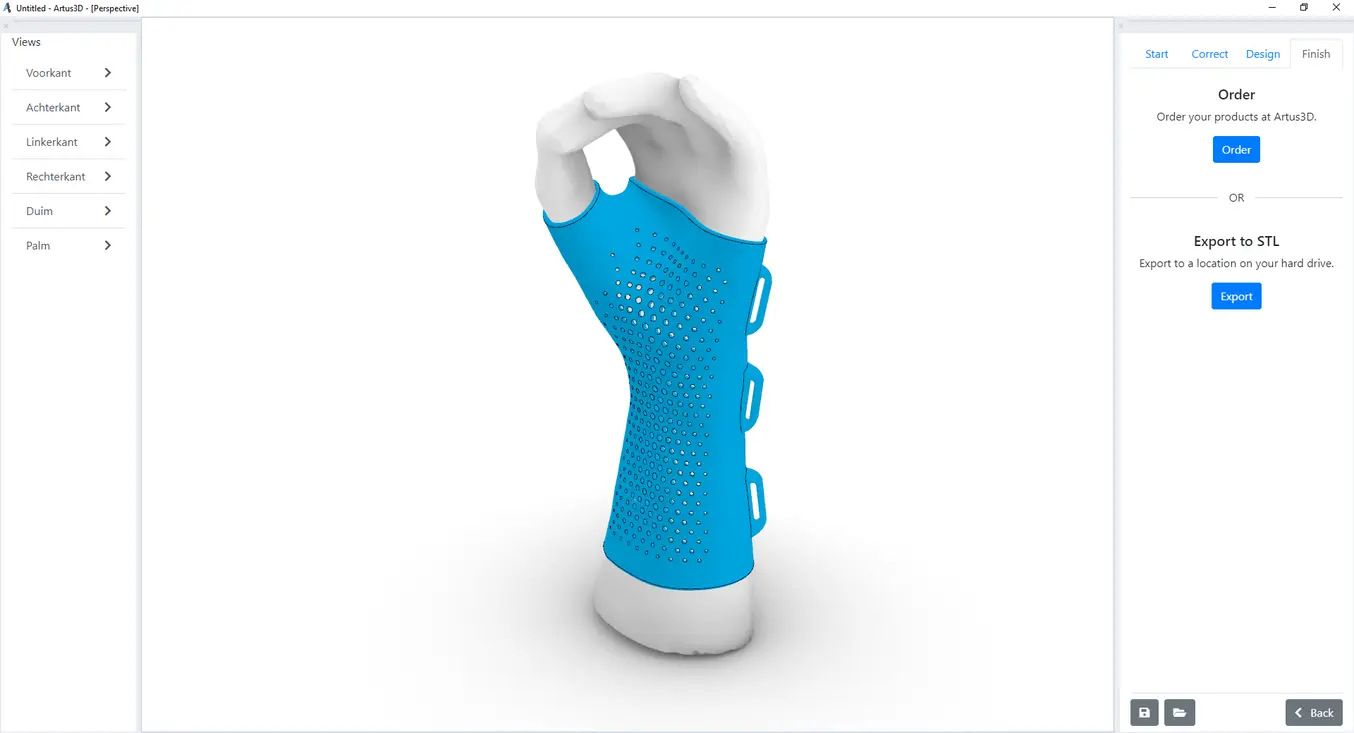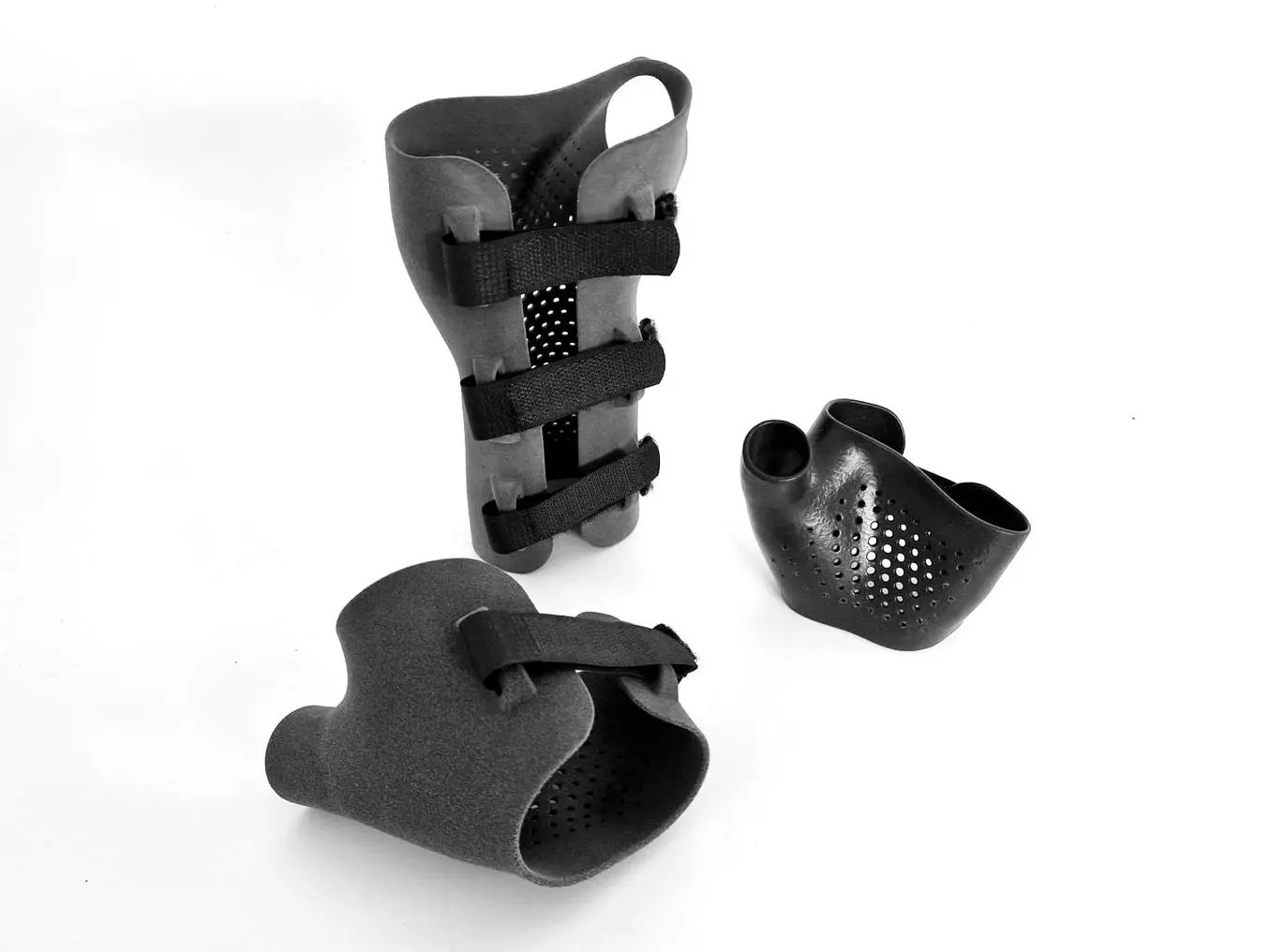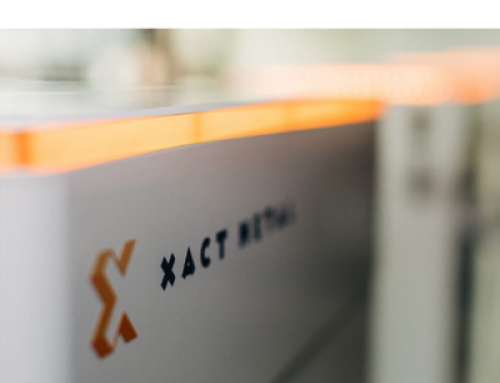Designing and Producing Hand Orthosis With Artus3D and the Fuse Ecosystem
Artus3D, based in Ridderkerk, the Netherlands, offers orthotists an all-in-one solution for creating hand orthotics. With seven years of experience, they initially outsourced their 3D printing but faced challenges with reliability and shipping times. This changed when they discovered the Fuse 1+ 30W selective laser sintering (SLS) 3D printer and TPU 90A Powder, allowing them to bring production in-house. This move gave them more control over their production, saving both time and resources.
Intuitive Digital Workflows
The Fuse 1+ 30W printer, designed for maximum output and minimal waste, enabled Artus3D to produce orthotics rapidly and efficiently. Their software simplifies the design process, allowing orthotists to create custom hand orthoses with basic 3D printing knowledge. Users can adjust designs, select materials, and print orthotics in-house or order them directly from Artus3D.

Once designed, the orthotic can be ordered from Artus3D or exported as an STL for printing.
The software will automatically generate a proposed hand orthosis, at which point users can adjust designs. Then, Broxterman says, “You select the material you want to print in. There are some settings preset. The software gives a preview of how it thinks the orthoses should look. From there, you can adjust every trim line you see. You can also adjust the thickness manually.”
Broxterman says that for orthotists, “The biggest problem, it’s the designing of the product.” The focus for Artus3D was, therefore, ease of use, leading to the development of, as Broxterman says, “a software in which end users or orthopedic CPOs can design their own hand orthoses with basic knowledge of 3D printing, so that it’s easy to start and use our software.”
The Advantages of 3D Printing In-House
By bringing 3D printing in-house, Artus3D reduced costs and production times, improving customer satisfaction. The Fuse Ecosystem, including the Fuse Sift and Fuse Blast, streamlined their workflow, enabling faster delivery times and higher-quality products. The TPU 90A Powder, known for its flexibility and durability, became a game-changer for Artus3D, providing comfortable and resilient orthotics.

TPU orthotics are printed in-house on the Fuse 1+ 30W (left). Fuse Sift (right) is the powder management station and Fuse Blast (not pictured) is used for automated cleaning and processing.
After 3D printing with the Fuse 1+30W, Artus3D uses the Fuse Sift for part extraction, powder recovery, storage, and mixing of new and used powder to minimize waste. They’ve recently added the Fuse Blast for fully automated cleaning and polishing, delivering clean, smooth parts with ease.
If you want to learn more about the Fuse 1+ 30W Workflow, watch the free on-demand webinar from Formlabs, by clicking on the link below:
Strong, Flexible, and Skin-Safe

Orthotics are finished with the addition of straps, and can be vapor smoothed like the part at the right to create a smoother, shinier finish.
One of the main reasons Artus3D adopted the Fuse 1+ 30W was material availability. Lars Broxterman, Sales and Production Manager at Artus3D says, “There weren’t that many 3D printing companies that printed in TPU, so we had to deal with their timelines. The turnaround point for self-printing was when the Fuse 1+ 30W offered the TPU material.”
Artus3D provides a variety of material options, but the introduction of TPU 90A Powder for the Fuse 1+ 30W marked a significant milestone. TPU 90A Powder is a robust elastomer known for its high elongation at break and superior tear strength, making it perfect for creating flexible, durable, and skin-safe orthotic devices. These properties ensure that the orthotics can withstand frequent use while offering a comfortable and secure experience for the wearer. As Lars Broxterman notes, “We don’t print just everything on the Fuse, but with small steps, we introduced the new material to our customers. They’re happy, so we are happy.”
Orthotics designed using Artus3D’s software and printed with TPU 90A Powder are available in three thicknesses: thin, normal, and thick, allowing for customization based on each patient’s specific needs. According to Broxterman, users have responded positively to orthotics made with TPU 90A Powder. “What we heard from the end users is that it’s easy to clean. It feels nice on the skin, it’s lightweight, so it’s very comfortable to wear.”
Want to learn more about the Fuse 1+ 30W? Contact us below:





Leave A Comment